Housley's Century Oak Winery
Tenuta Il Poggione
Brunello di Montalcino Sangiovese 2012
Founded at end of 1800 when Lavinio Franceschi, Florence land owner, visited the area. Over a century later, Tenuta covers an area of 530 hectares (140 planted with vines; 50 with olive trees). Aged in French oak for 36 months, 100% Sangiovese hand picked from 20-year old vines. A Gem! Deep Ruby. rich berry fruit aromas with complex spice. Palate has rich berry fruit flavors, baked cherry, with tobacco, cacao & subtle spice. Soft tannins, long finish ending with seductive earthy tones. Nice, aged well! — 4 years ago
Molino Real
Mountain Wine Málaga Moscatel 2016
Before phylloxera wiped out its vineyards, Málaga was considered one of Europe’s greatest wine regions and its legendary “mountain wines” were coveted throughout the world. In his memoirs, Hugh Johnson singled out an 1830s “mountain wine” bought at a Christie’s auction under the label Molino del Rey as the best wine he’d ever drank - and he’s had plenty. Taking its inspiration from Johnson’s account, Telmo Rodríguez’s Molino Real represents a groundbreaking effort to revive Málaga’s winemaking traditions and to explore the region’s potential for top quality sweet wines.
A “vino naturalmente dulce” or naturally sweet wine (not to be confused with Málaga’s also famous “vino dulce natural” a fortified style developed later in the 18th Century), Molino Real is made with Muscat of Alexandria grapes from 9 hectares of vines on steep slate slopes in Cómpeta in the Axarquía region. The grapes were sun dried - a process known as asoleo - to increase sugar concentration, fermented in 225-liter oak barrels and then aged for 20 months.
Sumptuous, exuberant nose. Flowers, orange blossom, and peach (actually peach yogurt). Balanced, not overwhelmingly sweet. Delicious! — 5 years ago
Sartori di Verona
Corte Brà Estate Collection Amarone della Valpolicella Classico Corvina Blend
Sartori di Verona is a 4th generation family winery driven by a profound love for their city of Verona. For over a century, Sartori has made wines that respect local tradition yet embrace innovation. Ownership in premium vineyards allows for control from vineyard to bottle with a steadfast focus on quality. PRODUCTION TECHNIQUE The grapes are carefully selected, placed in small crates, and air dried for 3 to 4 months. At optimal dryness, only the best grapes are hand selected and fermented in temperature controlled stainless steel for about 30 days. The wine is transferred to traditional tanks for malolactic fermentation and is then aged in various sized oak casks for about 4 years. At least 6 months of bottle ag,ng follows. BOUQUET Dried fruits, ripe berry, and plum. TASTE Rich, velvety, and full-bodied. — 6 years ago
Xoriguer
Mahón Gin
Blown away.
Delightful herbal aromatics , and when paired with your favorite tonic, a kafir lime kind of thing cones out and really graces the tongue.
Hard to find outside of España. If you do, grab a few! A cult gin from Mahon in Menorca, Xoriguer is one of the only gins in the world (alongside Plymouth) to have a geographical indication, Gin de Menorca. Gin has been made on Menorca since the 18th century British occupation and Xoriguer commands a devoted following of happy travellers. Unusually, Xoriguer is made in wood-fired pot stills from distilled wine (eau-de-vie) rather than the more usual grain-based distillate, and is rested in oak barrels before bottling. — 6 years ago
Domaine Laroche
Vieille Voye Chablis Chardonnay 2014
The Vieille Voye vineyard was planted before the 16th century by the Pontigny abbots, who named it after the old Roman road that connected Burgundy with Champagne. This single Vineyard is a big step above their entry level wine. Nose of ripe fruit with sweet spice. On the palate ripe peach and tropical fruit and sweet spice coming from 11 months of oak aging. Lingering finish, lively acidity ending with chalky mineral tones. Tasting Sample. — 6 years ago
Domaine de Ferrand
Châteauneuf du Pape Red Rhone Blend 2015
Founded in 1960 by Charles Bravay (although the property actually dates to at least 1760), Domaine de Ferrand didn’t produce its first estate wine until 1995 when Philippe Bravay took the reins from his father. It’s 90% Grenache from vines nearly a century old. It sees no oak, only a combination of stainless and concrete during fermentation followed by aging in concrete vats.
Initially austere, the 2015 Châteauneuf-du-Pape presents a rugged exterior. With time its layers start to peel back and it’s hard not to notice how intoxicatingly sexy it is.
The entire spectrum of red fruit is on display, including kirsch, supple raspberry, and even a savory, pickled strawberry. The fruit is equally matched with a mix of Provençal herbs, lavender, and mineral purity, leading you down the path to its lengthy finish. Only then do you realize how tight the grip is. I’m not the first to point out the notions of heat, but in the $30s, you’ll get nothing and like it. What an exceptional value! — 7 years ago



Château Grand-Puy-Lacoste
Pauillac Red Bordeaux Blend 2017
Family history dates back to the 16th century. Name of Grand-Puy, mentioned in documents from Middle Ages, comes from ancient term "puy" means "hillock, small height". Since 16th century, property was passed from generation to generation, until 1920s when the Borie's bought the property. 80% Cab Sauv, 80% new oak, aromas of ripe red fruits with floral spice. Palate shows blackberry and cherry fruit, well balanced, nice oak integration, chewy tannins ending with spicy mineral tones. — 4 years ago
Château Clos de Sarpe
Saint-Émilion Red Bordeaux Blend 2000
Football & Steak 🥩 wine. Didn’t realize this winery goes back almost 100 years. I see some 1937 out there still.
Parker 96.
Even at 20 years old it needs a 2nd day 3 hour decant.
Parkers review,
189, The Wine Advocate
Readers who require immediate gratification will dislike this wine, which is one of the most concentrated behemoths and tannic blockbusters of the vintage. This is very much in keeping with the proprietor’s intention to make wines such as they made in the 19th century, and ones that can last 50+ years. Still young, with plenty of noticeable new oak, this 2000 tastes like a 3 to 4-year old St.-Emilion. Plenty of barbecue smoke, graphite, blackberry, and plum characteristics are present in both the aromatics and flavors of this broodingly backward, massive monster. While fascinating, it is not for everybody. I originally gauged its maturity to be around 2010, but I would push that back to 2015-2040+. — 4 years ago
Château La Mission Haut-Brion
Pessac-Léognan Red Bordeaux Blend 2001
So, if it’s my birthday celebration, there is a juicy ribeye & some old(er) Claret.
My only disappointment with this bottle is as good as it is, there are better things still down the road.
The nose reveals classic Claret. There are earthy, funky fruits of; blackberries, black raspberries, dark cherries, black plum, baked strawberries with shades of raspberries. Steeped fruit teas, limestone minerals, dry crushed rocks, stones, black, rich earth, clay, dry herbs, dark berry cola, cedar, leather, not quite fresh tobacco, underbrush, graphite, gentle, dark spice, slight peppery notes, clove, touch of nutmeg & cinnamon & vanillin, anise to black licorice, eucalyptus notes with fresh & slightly candied florals of, red, dark, blue, purple & violets.
The body is medium full with rounded, nicely resolved, tarry tannins. The structure, tension, length and balance are really singing. It would be good to have another 2001 LMHB in ten years. While 2001 wasn’t a critically acclaimed vintage, I think LMHB over performed the vintage. As well, it followed a grand 2000 vintage which, handicapped it from the start. Ripe; blackberries, black raspberries, dark cherries, black plum, baked strawberries, bright cherries, rhubarb, figs, with shades of raspberries. Steeped fruit teas, limestone minerals, dry crushed rocks, stones, black, rich earth, clay, dry top soil, dry herbs, dark berry cola, cedar, leather, not quite fresh tobacco, underbrush, graphite, gentle, dark spice with soft heat, slight peppery notes, clove, touch of nutmeg & cinnamon & vanillin, anise to black licorice, eucalyptus notes with fresh & slightly candied florals of, red, dark, blue, purple & violets. The acidity is excellent...like a gentle rain shower. The long finish is elegance defined, extremely well balanced ending in soft, round, dry, dusty tannins with beautiful spice.
Photos of; Chateau La Mission Haut Brion & estate vines, beautiful barrel room, pond & Roman columns and the back vow of the Chateau.
Please indulge me while I post some history on this grand producer. As much as I love the wine, I love the history & people that do the hard work to bring us such great wines.
Chateau La Mission Haut Brion is not quite as old as Chateau Haut Brion. However, they are opposite side of the road neighbors. La Mission Haut Brion dates back to the late 16th century. The property came into being after it was purchased by Jean de Pontac in 1533. US winery history is a baby compared to France.
In 1607, the estate changed hands. It was inherited by Ms. Olive de Lestonnac. What an inheritance!
In 1815, something rare happened. Chateau La Mission Haut Brion became the property of an American owner, the Chiapelle family. At the time, the family was already involved in the Bordeaux wine trade. In fact, they knew about the business as they had managed a myriad of different estates including Chateau Cos d’ Estournel.
La Mission Haut Brion continued to change hands until it was finally sold to another American family, the Woltner’s. Frederic Woltner purchased La Mission Haut Brion in 1919. The also became owners on Howell Mountain.
It changed hands one final time in 1983 when it was purchased by Domaine Clarence Dillon, the owner of neighboring, Chateau Haut Brion. They renovated the entire property, starting with replanting the vineyards which, was completed in 1987.
The 26 hectare vineyard of Chateau La Mission Haut Brion is planted to; 45.8% Cabernet Sauvignon, 43.8% Merlot and 10.4% Cabernet Franc. 3.5 hectares of vines are reserved for the production of the white Bordeaux.
To produce the red wine of Chateau La Mission Haut Brion, the wine is vinified in large, 180 hectoliter, temperature controlled, stainless steel vats and aged in 100% new, French oak for an average of 22 months. The annual production of La Mission Haut Brion averages between 6,000 and 7,000 cases per year. — 5 years ago
Château Fuisse
Tête de Cru Pouilly-Fuisse Chardonnay
A 15th Century tower flanks Chateau Fuisse, a family home whose history is evidenced by a number of 300 year old artifacts and adornment. From a blend of over 20 vineyards, and about 70% sat on oak for 20 months (25% new), the remaining 30% in stainless steel tanks. Aromas of stone fruits with cedar and floral spice notes. On the palate apple and pear flavors with a citrus oak character. Lingering finish, well balanced but a little forward now, ending fresh and crisp with oaky edge. Needs more time to calm. — 7 years ago

Château Lafite Rothschild
Carruades de Lafite Pauillac Red Bordeaux Blend 2003
On the nose, ripe; blackberries, sweet & sour dark cherries, cooked cherries & strawberries & hues of blueberries. Black tea, cola, soft baking spices; vanilla, light clove & cinnamon. Crushed rocks, stones, limestone, turned, moist black earth, tobacco leaf, saddle-wood, soft leather, dry & fresh dark red florals.
The body is medium edging toward full. The tannins pretty well resolved. The ripe fruits show the hot, ripe vintage. Blackberries, sweet & sour dark cherries, cooked cherries & strawberries & hues of blueberries black tea, cola, soft baking spices; vanilla, light clove & cinnamon. Crushed rocks, stones, limestone, tobacco with ash, some graphite, soft medium dark spice, turned, forest floor, powdery but edgy minerals, saddle-wood, soft leather, dry & fresh dark red florals with some violets on the finish.
This showed better with Ribeye. The Ribeye brought out a fuller, richer wine with even more complexity. 9.35-9.4 with the Ribeye. It just missed 9.2 on its own. It’s big brother the 03 “Lafite” is 💯 point Parker wine.
Photos of; Chateau Lafite, their oak vat fermenters, Estate wine and their magnificent barrel room.
Interesting history and producers notes...Lafite Rothschild has a long and interesting history dating back to 1234, even though the property was not in the Bordeaux wine business at that time.
It is has been largely believed that vines were already planted on their terroir. The owner of the estate at the time, Gombaud de Lafite left his mark, his name. Almost 1,000 years after he owned it, the Chateau is still named after him! The vines were probably in existence at Lafite for over a century, it was not until around 1680, the majority of vineyards of what we know of as Lafite Rothschild today were created. This is because on the 1680 estate manifest, there are six mentions of their Bordeaux vineyards. Jacques de Segur, earns credit for cultivating the vineyard as I wrote in my Colon Segur post last weekend. In 1695, Alexandre de Segur married Marie-Therese de Clauzel, heiress to Chateau Latour. So to dovetail that write up, within a generation, the Segur family married into two of the greatest Bordeaux vineyards, Chateau Lafite and Chateau Latour! When their son, Nicolas-Alexandre passed away, Chateau Lafite and Chateau Latour were separated.
In 1797, Chateau Lafite was sold again. In the deed of sale, Chateau Lafite was described as a Premier Cru of Medoc. This is one of the earliest mentions of what we know of today as Lafite Rothschild producing wines of what would later be classified as an 1855 First Growth.
At that time, of Lafite were managed by the Goudal family. The Goudal family were wine historians and were able to read accurate records and details of the viticulture and marketing plans for Chateau Lafite in the estates formative years. The Goudal family gets the credit for creating the cellar and saving many of the oldest bottles that remain in the cold, dark cellars, including their oldest bottle, the 1797 Lafite!
The start of the famous Rothschild family begins in 1744, with the birth of Amschel Meyer. Amschel Meyer began creating his fortune while working as a merchant at “Zum Roten Schild,” which eventually became the family name of Rothschild.
In 1798 his sons were sent to various cities to create their fortunes. Needless to say, his sons all prospered as did their children in turn. This eventually led to them wanting to own a Chateau in Bordeaux. So in 1853, Baron Nathaniel de Rothschild, an English member of the Rothschild family, purchased Chateau Brane-Mouton. As was the custom of the day, the new owner renamed it using his name and Chateau Mouton Rothschild was born.
This was followed in 1868, when James Rothschild, another member of the family purchased Chateau Lafite, which was now a coveted First Growth.
On 8 August, 1868, Baron James d’Rothschild purchased Chateau Lafite, which was sold at a public auction in Paris. It’s assumed, he bought the property for family competitive reasons looking to one up his brother, the owner of Mouton Rothschild. At that time, Mouton Rothschild was only a Second Growth at the time. But, that does not paint the entire picture. The 1855 Classification had not taken on the importance associated with it the we see it today. Plus, buying Lafite was a reasonable investment as the vineyard sold for about 8 times its earning potential.
The actual Chateau is one of the older structures in Bordeaux, as part of the building dates back to the later part of the 16th century. In 1868, the vineyard took up 135 hectares, of which 74 hectares were cultivated with vines. Production was much smaller in those days than it is today as it was between 4,000 and 5,000 cases.
Just three months after the purchase, Baron James d’Rothschild passed away and Chateau Lafite Rothschild became the joint property of his three sons; Alphonse Rothschild, Gustave Rothschild & Edmond Rothschild. Since 1868, Chateau Lafite Rothschild has remained in the hands of the of Rothschild family. The new owners renamed the estate Chateau Lafite Rothschild.
Jumping ahead to the modern age, in 1962, the Rothschild family added to their holdings when they purchased Chateau Duhart-Milon, a Fourth Growth vineyard also located in Pauillac. It was owned by the Casteja family for more than a century, Chateau Duhart Milon suffered from neglect and was in a awful condition. By the time Duhart Milon was obtained by the Rothschild family, the vineyard was down to only 17 hectare which required extensive renovations.
Baron Eric Rothschild, nephew of Baron Elie Rothschild, took over the management of Lafite Rothschild in 1974. Baron Eric Rothschild was part of the fifth Rothschild generation to inherit Chateau Lafite Rothschild. In 1984, the Rothschild family added to their holdings in Bordeaux with the purchase of Chateau Rieussec in Sauternes.
1987 was a difficult vintage, but because that was the year Lafite celebrated the inauguration of their wine new cellar, they had a lot to be excited about.
The new cellars were built under the supervision of Catalan architect Ricartdo Bofill, is both underground and circular, with a vault supported by 16 columns, giving the structure a majestic architectural style. The cellar holds 2,200 barrels, which is about 55,000 cases of wine. The construction took two years to finish and was completed in 1988.
Domaines Baron Rothschild became one of the first Bordeaux properties to invest in South America when they purchased Vina Los Vascos from a Chilean family. The owners of Lafite Rothschild continued expanding their holdings with the purchase of Chateau lEvangile in Pomerol from the Ducasse family, who owned the property for almost 100 years.
The wine making at Chateau Lafite Rothschild was managed by Charles Chevallier, who began his position in 1994. Charles Chevallier was replaced by Eric Kohler in January 2016. 2017 saw another change at the estate when Jean Guillaume Prats replaced Christopher Salin as the President of Domaines Baron Rothschild.
Perhaps, it’s the most refined of the First Growth. The wine, like all First Growth’s takes decades to mature. It has remarkable staying powers. Bottles of 1870 Lafite Rothschild discovered in the Glamis castle remain profound at more than 140 years of age! It is consider by many Master Sommeliers to be the best wine in the world.
Chateau Lafite Rothschild is one of the earliest major Bordeaux estates to bottle their own wine. In 1890, they bottled a large portion of the wine and again in 1906. Part of the estate bottling was due to requests from Negociants who were willing to pay more for Chateau bottled wines. Also, bottling was primarily done to combat piracy. At the time, it was known that merchants in some countries, like Russia were bottling cheap wine and placing labels from Lafite Rothschild on the bottles. The Koch’s famous Jefferson bottles were not the first attempt at counterfeiting.
Prior to 1996, some would say the property had its share of ups and downs. The 1960’s and 1970’s were not great for Chateau Lafite Rothschild. But since 1996, Lafite Rothschild has been producing some of the best wine in their history!
Sadly, only the wealthy can afford to purchase it. Price aside, there is no denying the level of quality. In 2003 Lafite Rothschild produced a wine that is possibly unequaled by the estate at any time in their long history. Hence, my purchase of their 03 second wine. 2009, 2010 and 2016 are not far behind.
Starting in about 2008, Lafite Rothschild became the most collectible wine from Bordeaux. Prices exploded due to demand from China as Chinese businessmen bought them as gifts or bribes depending on you look at it.
The reason this started was Lafite Rothschild paid for product placement on the number one rated Chinese soap opera on television. Characters in that show were pictured enjoying life with Lafite Rothschild and since then demand went through the roof as did priced.
However, Issac Newton had it right when he declared “What goes up, must come down.” Prices for Lafite Rothschild plummeted after 2011. By the difficult 2013, prices were finally starting to hold firm, but many of the vintages that were setting price records on a daily basis had lost close to 50% of their value.
Starting with the 2012 vintage, Chateau Lafite Rothschild began instituting anti-counterfeiting measures. From 2012 forward, to help fight, rampant counterfeiting, the estate places a seal of authenticity on the capsules of both Lafite Rothschild and Carruades de Lafite. The seal features a unique, numbered code that can be checked on their website, to verify if the wine is real.
The 112 hectare vineyard of Chateau Lafite Rothschild is planted to 70% Cabernet Sauvignon, 25% Merlot, 3% Cabernet Franc and 2% Petit Verdot. This shows a slight change in the vineyard.
While Cabernet Sauvignon remained at 70%, today there is slightly more Merlot, less Cabernet Franc and the Petit Verdot has been added since the mid 1990’s.
Located in the far north of the Pauillac appellation, only the small, Jalle de Breuil stream separates the vineyards from St. Estephe. You could divide the vineyards of Chateau Lafite Rothschild into three sections with 100 separate parcels in all. The estate has close to 50 hectares of vines located close to the Chateau, on both sides of the D2, which offers gentle rises in elevations of up to 27 meters. They also have about 50 hectares vines planted on the plateau in the Carruades sector, where they have two blocks of vines, one of which is inside the vineyard of Chateau Mouton Rothschild. It is interesting to note that even though the parcels in the Carruades sector give their name to the second wine of the estate, those vines are almost always placed in the Grand Vin.
There are also vines adjacent to, and interspersed with the vineyards of Chateau Duhart Milon. The property also consists of a smaller, 4.5 hectare parcel of vines located in the Saint Estephe appellation, “La Caillava”. The vines in St. Estephe are situated not that far from Cos d Estournel, which are located on a larger a parcel known as Blanquet. The vines in Saint Estephe are allowed to be placed into the wine of Chateau Lafite Rothschild because those vines were used to produce Lafite in 1885, at the time of the classification. The vineyards are close to their famous neighbor Mouton Rothschild.
Located just south of the Chateau, the best terroir of Lafite Rothschild has a thick layer of gravel with sand, clay, marl and limestone in the soils with rolling, gravel slopes. The gravel can be as deep as 4 meters in some parcels.
It is important to note that even though their vineyards are in the far north of Pauillac, most of the soil is pure gravel, rocks and stones. With more than 50% of the soil consisting of gravel, that is a large part of the reason Lafite Rothschild has such elegant, feminine textures and that coveted sensation of minerality.
On average, the vines are close to 40 years of age. However, Chateau Lafite Rothschild has much older vines. In fact, they have some vines that are more than 100 years of age planted in the La Graviere section. That small parcel of Merlot vines dates back to 1886. Less than 1% of the vines are that old.
Additionally, they have a small section of Cabernet Sauvignon that dates back to 1922! Other old vines range from 50 to 90 years of age! They also maintain some of the oldest Petit Verdot vines in the Medoc that was planted in the early 1930’s.
At Chateau Lafite Rothschild, between 1% to 1.5% of the vineyard is replanted every year. Vines less than 20 years of age are never included in the Grand Vin.
The vineyard of Chateau Lafite Rothschild is planted to a vine density that ranges from 7,500 to 8,500 vines per hectare. Only organic fertilizers are used in the vineyards of Lafite Rothschild.
During harvest, the goal is not to pick at the maximum level of ripeness. Instead, they are seeking a blend of grapes at differing levels of maturity, which gives the wine its unique textures, freshness, aromatic complexities and elegant sensations.
Lafite Rothschild is the largest of the First Growth vineyards with close to 112 hectares of vines. A large portion of the estate is taken up with stunningly, beautiful landscaping, lakes, trees and parkland.
At one point in time, Chateau Lafite Rothschild produced a dry white, Bordeaux wine that was sold as Vin de Chateau Lafite. The wine was produced from a large percentage of Semillon, blended with a small amount of Sauvignon Blanc. The last vintage for their white wine was 1960. The wine was sold as a generic AOC Bordeaux blanc with a simple, scripted label, black and white label.
Lafite vinification takes place in 66 vats that are a combination of 29 wood vats, 20 stainless steel tanks and 17 concrete vats that range in size from as small as 45 hectoliters up to 123 hectoliters in the concrete and as large as 270 hectoliters for the wood. The wide range of vat sizes coupled with different materials allow Chateau Lafite Rothschild to vinify depending on the needs of each specific parcel and grape variety. The stainless steel tanks and oak vats are used for Cabernet Sauvignon. The Merlot is vinified in the concrete tanks. Malolactic fermentation occurs in smaller, stainless steel tanks that vary in size from 25 hectoliters up to 60 hectoliters. At this point, Chateau Lafite Rothschild does not yet use gravity to move the fruit and juice in the cellar. It’s a good bet that a remodel is coming soon.
The average annual production of Chateau Lafite Rothschild ranges from 15,000 to 20,000 cases of wine per year, depending on the vintage. They of course make this second wine, Carruades de Lafite, which due to the name and association with the Grand Cru, has also become extremely collectible. Carruades de Lafite takes its name from a specific section of their vineyard that is located near Mouton Rothschild. Carruades is actually one of the older second wines in Bordeaux, as it was first produced in the mid 1850’s. About 100 years later during the mid 1960s, the estate reintroduced their second wine naming it Moulin de Carruades. The name was changed again in the 1980’s to Carruades de Lafite.
There is also a third wine which is sold as an AOC Pauillac that is produced from declassified fruit from Lafite Rothschild and Duhart-Milon.
The blend for Chateau Lafite Rothschild changes with each vintage depending on the character and quality of the vintage. Generally speaking, the amount of Cabernet Sauvignon in the blend ranges from 80% to 95%. Merlot is usually 5% to 20%. Cabernet Franc and Petit Verdot usually varies from 0 to 5%.
— 7 years ago
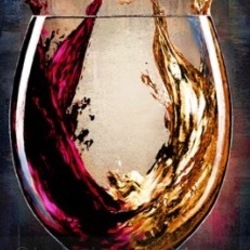
Cesca Vicent
Cabaler Priorat Maccabeu - Garnatxa Blanca 2015
One of the oldest vineyards in Priorat, dating as far back as the 15th century. A blend of 55% Macabeu and 45% White Grenache, aged 4 months in French oak, pale lemon with beautiful aromas stone fruits, herbs and floral notes. On the palate flavors of ripe apple, apricot and citrus with notes of cedar and vanilla. Long finish, lively acidity, great mouthfeel, ending with fruit, mineral and vanilla spice. Very nice! — 4 years ago
M. Chapoutier
Monier de La Sizeranne Hermitage Syrah
History of Chapoutier family dates back to the early 19th century when current owner Michel Chapoutier’s great-, great-, great-grandfather Marius purchased estate & famous l’Hermitage vineyards. Medium Ruby with aromas of rich red/black fruits and spice. On the palate raspberry, cherry & black currant flavors with notes of oak. Firm tannins, well balanced ending with fruit, spice and cedar. Very nice! Tasting Sample. Has lots of room to bottle evolve. — 4 years ago

Housley's Century Oak Winery
Inez's Vineyard Old Vine Zinfandel 2015
Raisins and spicy with oak and smoke — 5 years ago
Concha y Toro
Don Melchor Puente Alto Vineyard Cabernet Sauvignon 2014
Foot of the Andes Mountains on banks of Maipo River in Upper Maipo Valley, 650 meters above sea level, vineyard dates back to mid-19th century, when first pre-phylloxera French varieties were brought to Chile, deep Ruby with aromas of dark fruits & mineral notes, a blend of 92% Cab Sauv & 8% Cab Franc, aged for 15 month in French oak (65% new). On the palate flavors cherry & blackberry with powerful tannins, long finish, very tight, ending with mineral and tobacco notes. Needs ten years. Tasting Sample! — 5 years ago
Miguel Torres
Mas La Plana Penedès Cabernet Sauvignon 2012
Torres family has been related to wine since the 17th century. Aged in oak for 18 months (70% new). Dark Ruby with aromas of black and blue fruits and complex spice. This Spanish Cab shows blackberry, currant and ripe cherry flavors with eucalyptus and herb spice, concentrated and complex with well integrated and structured tight smooth tannins. Long finish ending with earthy mineral notes. Just starting to be enjoyed now but this beauty has room to continue to develop. Very Nice! Tasting Sample. — 6 years ago
Castell d'Encus
-SO2 Costers del Segre White Blend 2014
Wine made by a lovely winemaker, Raül Bobet. Hand harvested sauvignon blanc and semillion. Partly fermented in 12th century stone vats in the Catalonian Pyrenees, partly French oak and Stainless steel. Hearty, seductive wine. — 6 years ago
Au Bon Climat
Hildegard Estate Bottled Santa Maria Valley White Blend 2015
Hildegard was an 8th Century queen where legend has it she grew weary of drunken knights spilling red wine all over her place, so she had servants replant some of the vineyards to white grapes. A blend of a blend of Pinot Gris (50%), Pinot Blanc (40%) and Aligoté (10%), aged for 2 years in French oak, 100% new (long for a white). Pleasant aromas of fruit, spice and cedar. On the palate slight peach and citrus notes, well integrated with oak and spice. Lingering finish ending with nutty spice character. This white was something special! Tasting Sample! — 6 years ago
Venge Vineyards
Silencieux Napa Valley Cabernet Sauvignon 2015
The Venge (ven-ghee) family has farmed grapes in Napa Valley for nearly a half-century, beginning when Knud Venge migrated from Denmark to the United States in the early 1900’s. Aged in French oak, 65% new, for 18 mos. A big wine, decant for an hour! Deep ruby with aromas of fresh blue and black fruits. On the palate blackberry and blueberry flavors, well balanced, good structure, full body, firm tannins, medium+ length ending. Will age well. — 7 years ago
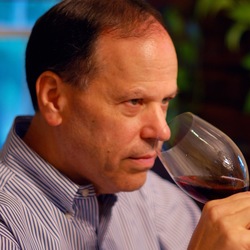

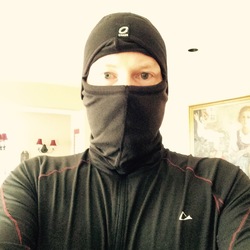



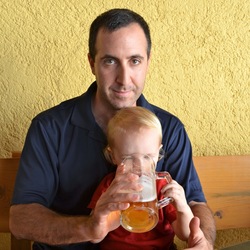

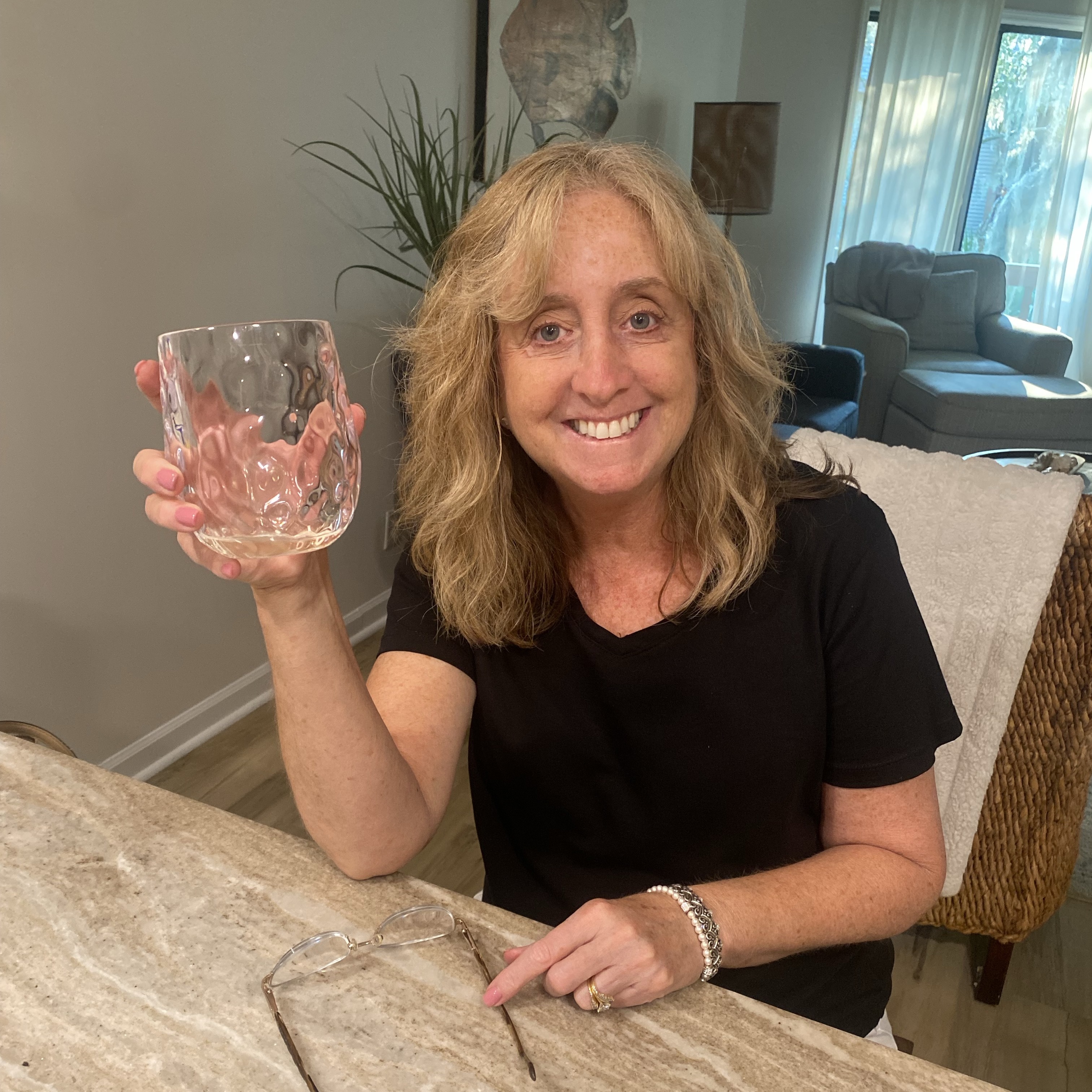
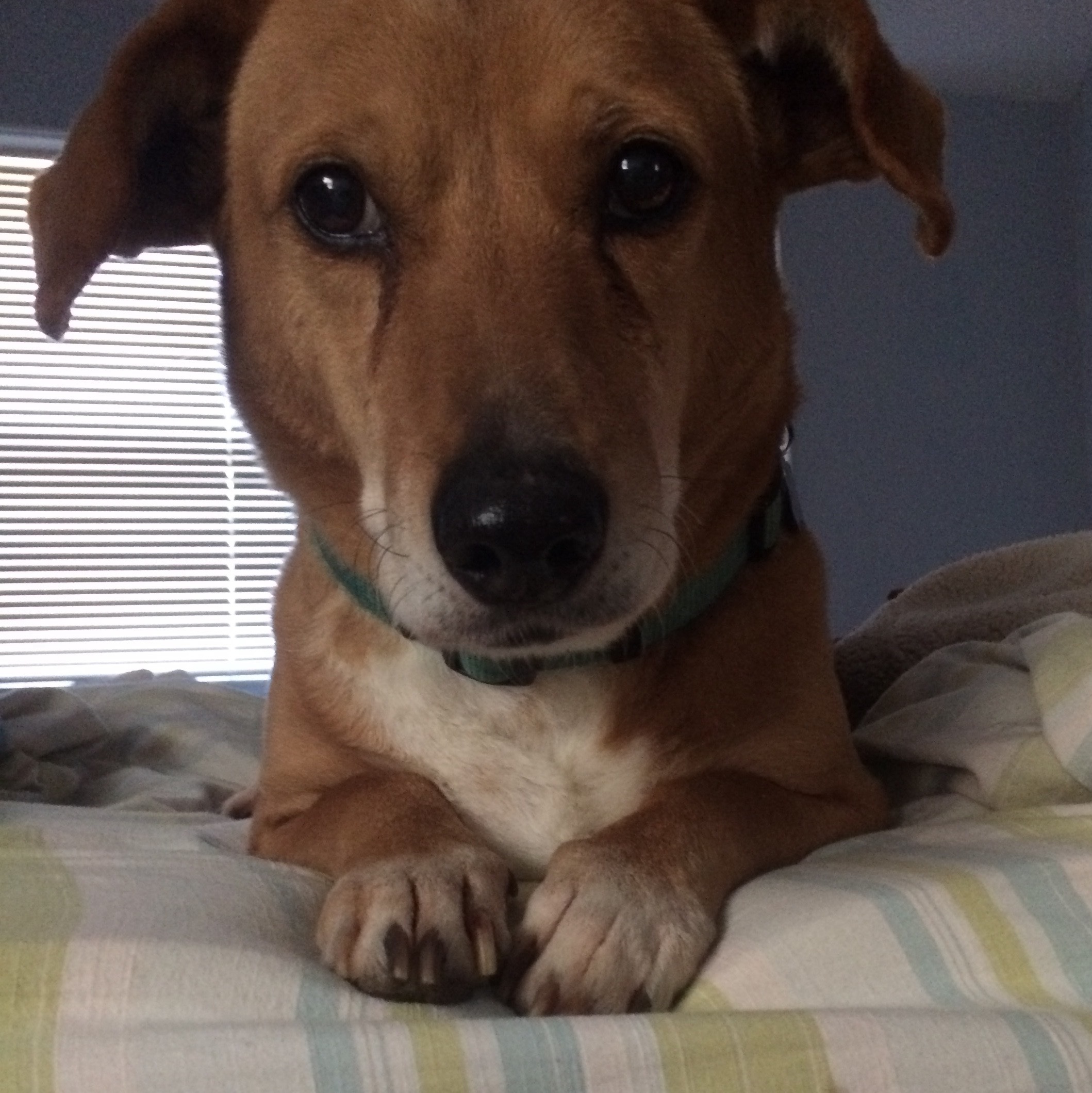

Sipping Fine Wine
History of Chapoutier family dates back to the early 19th century when current owner Michel Chapoutier’s great-, great-, great-grandfather Marius purchased estate & famous l’Hermitage vineyards. Medium Ruby with aromas of rich red/black fruits and spice, 16 months in 25% new French oak. On the palate raspberry, cherry & black currant flavors with notes of oak. Soft dusty tannins, well balanced ending with fruit, spice and cedar. Very nice! I wouldn’t age long, great now! — 3 years ago